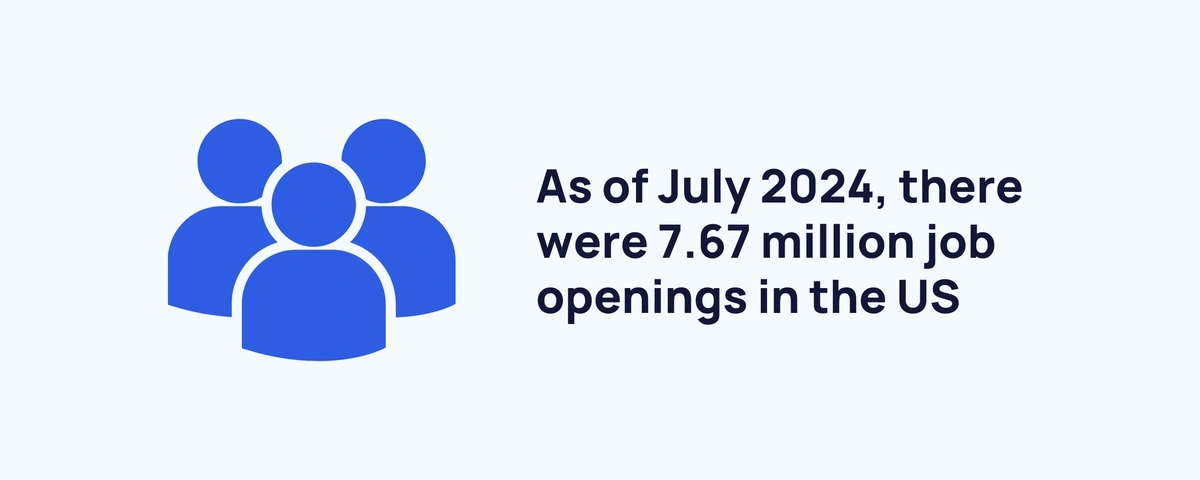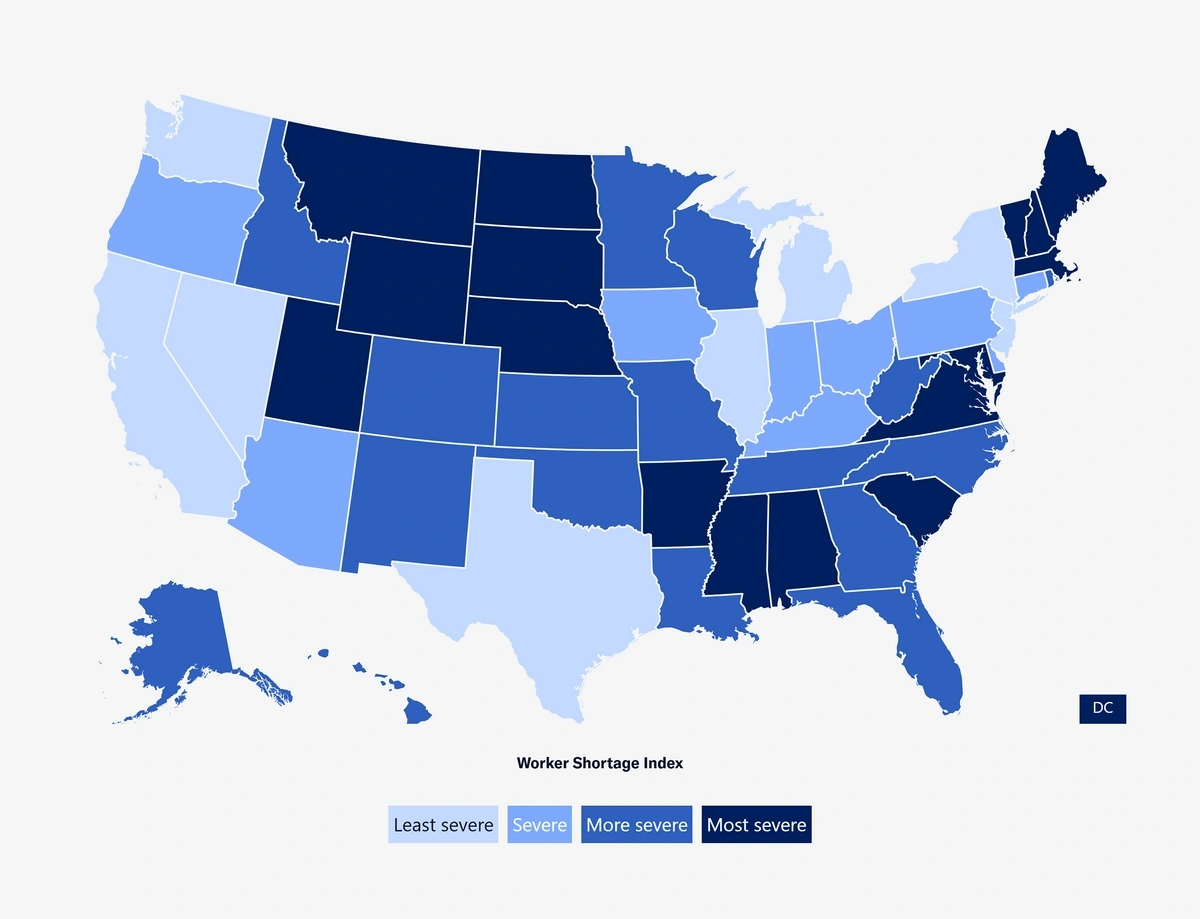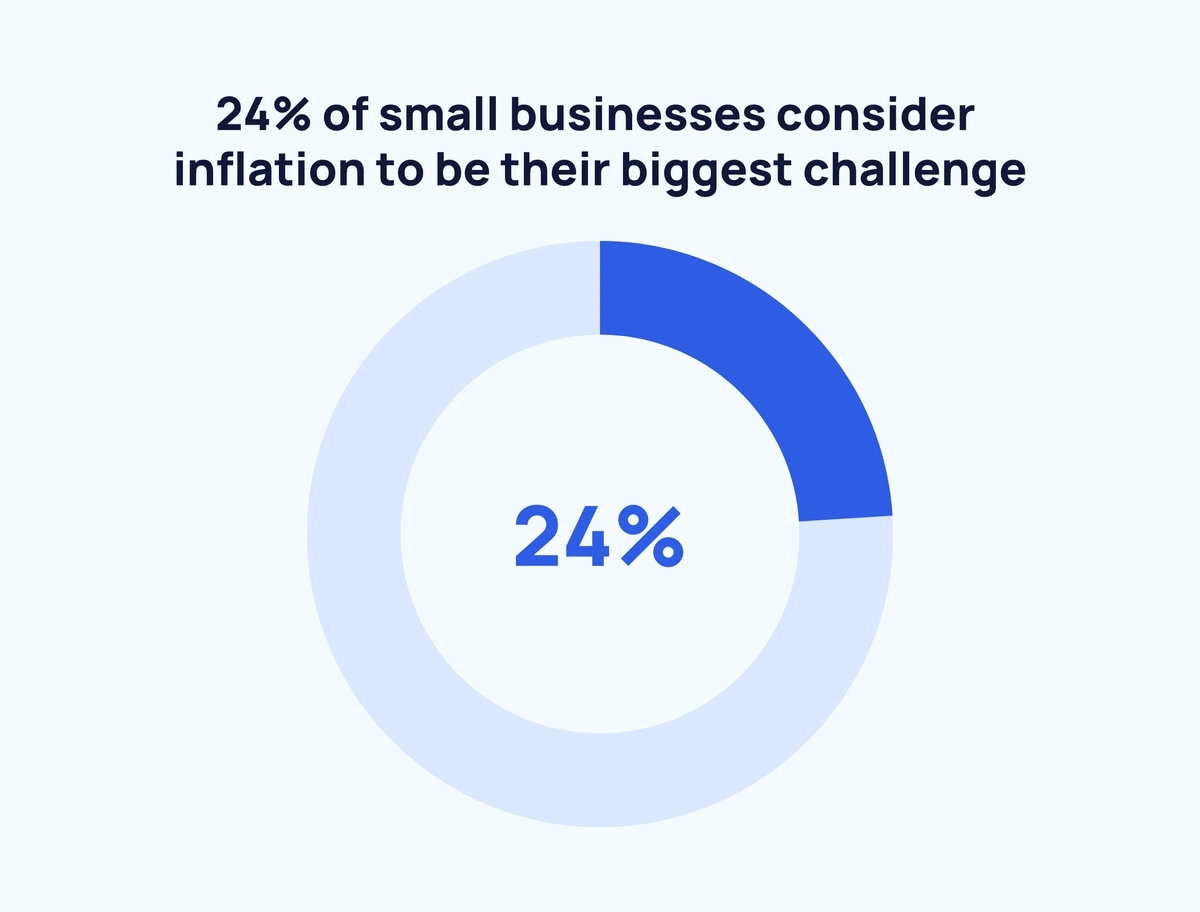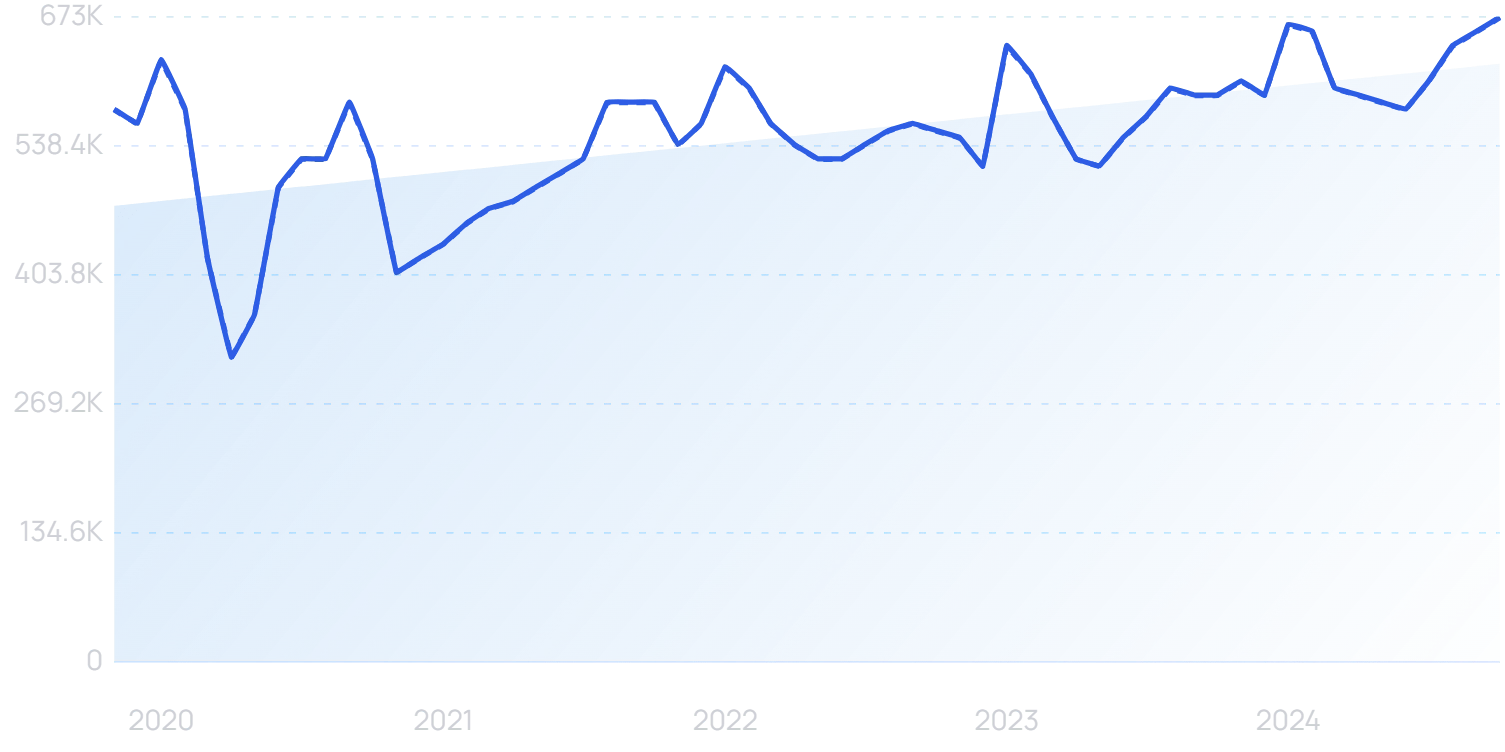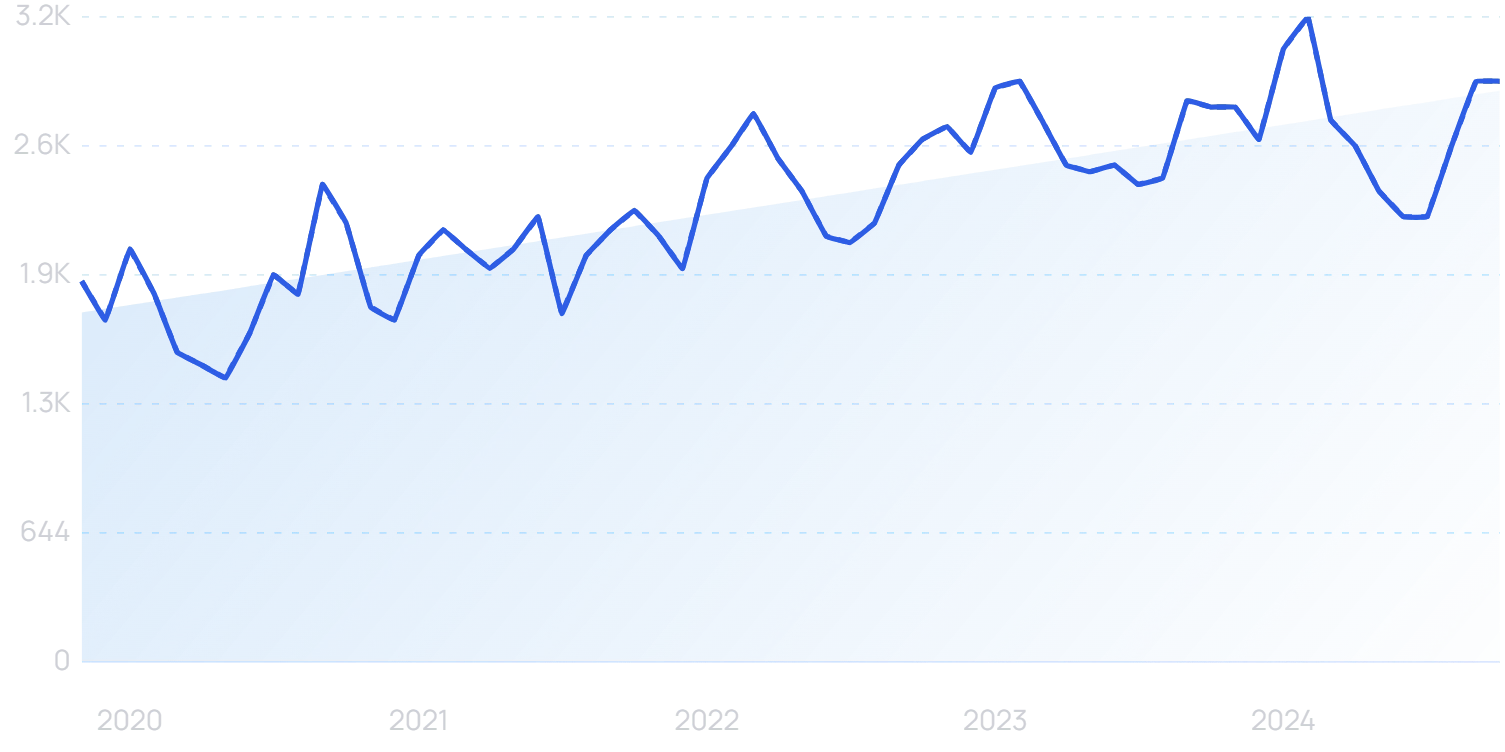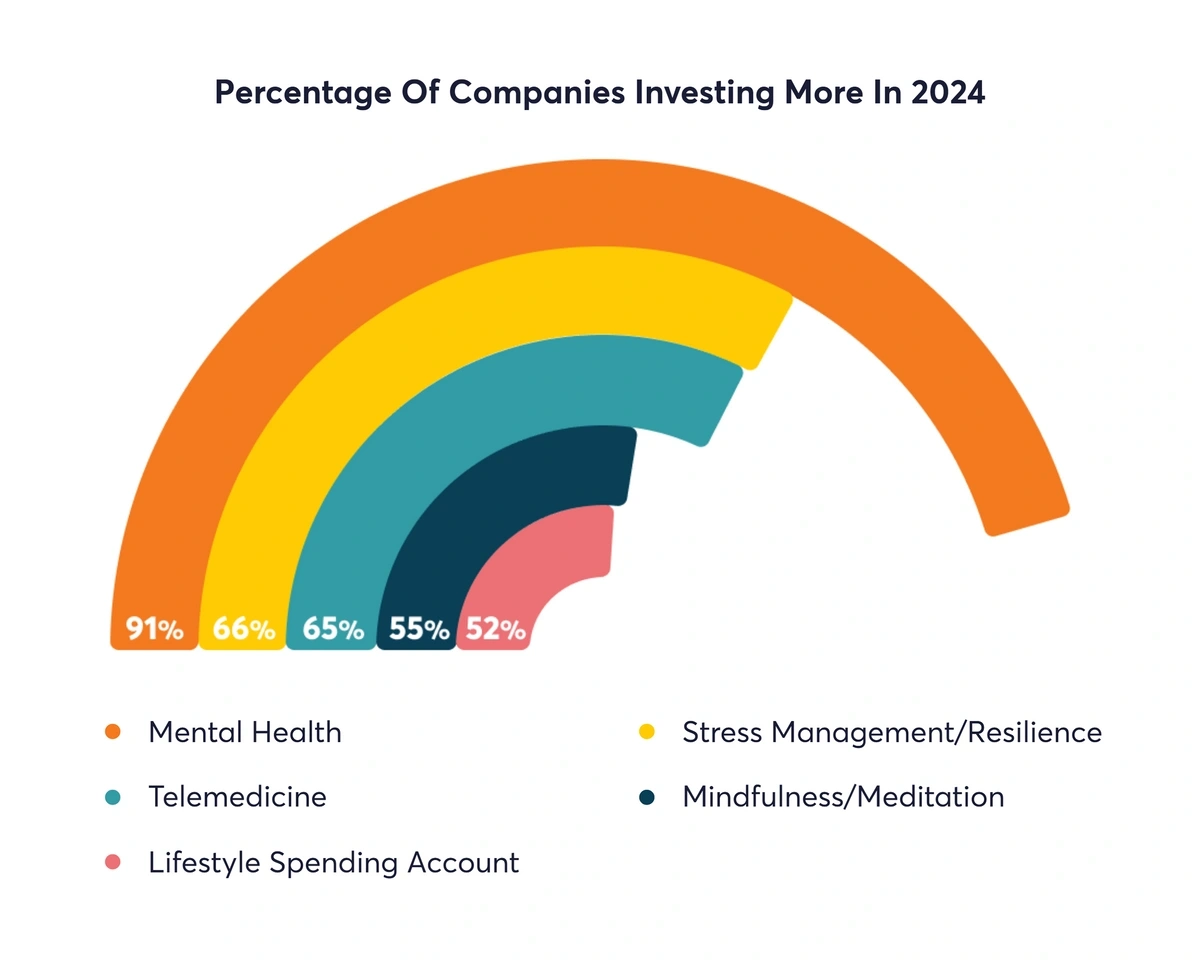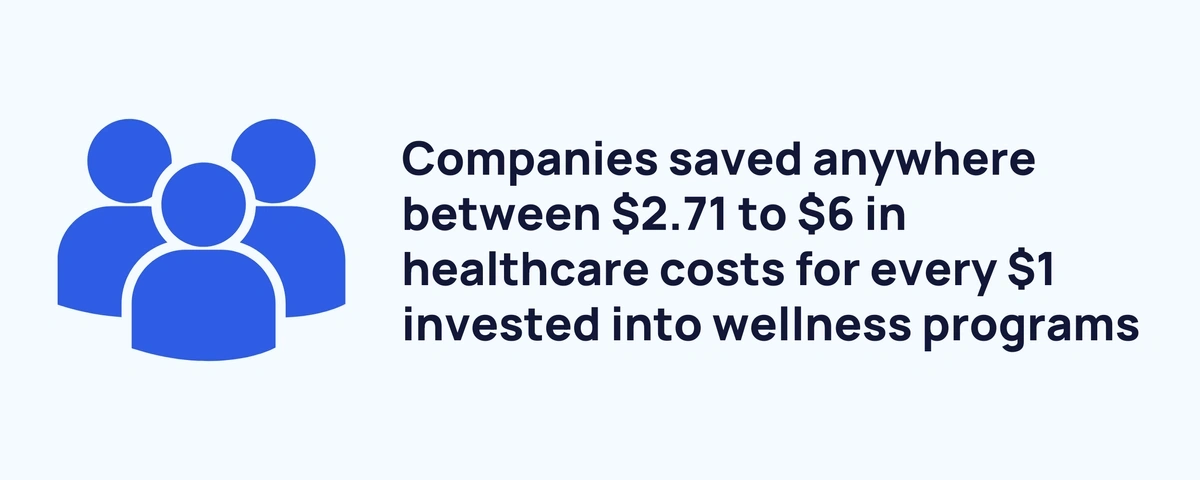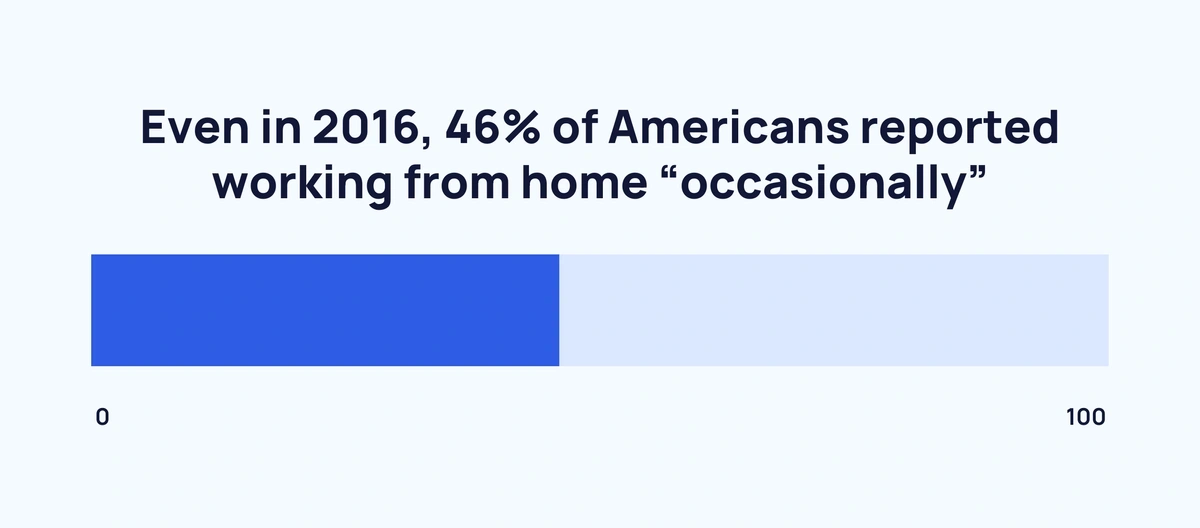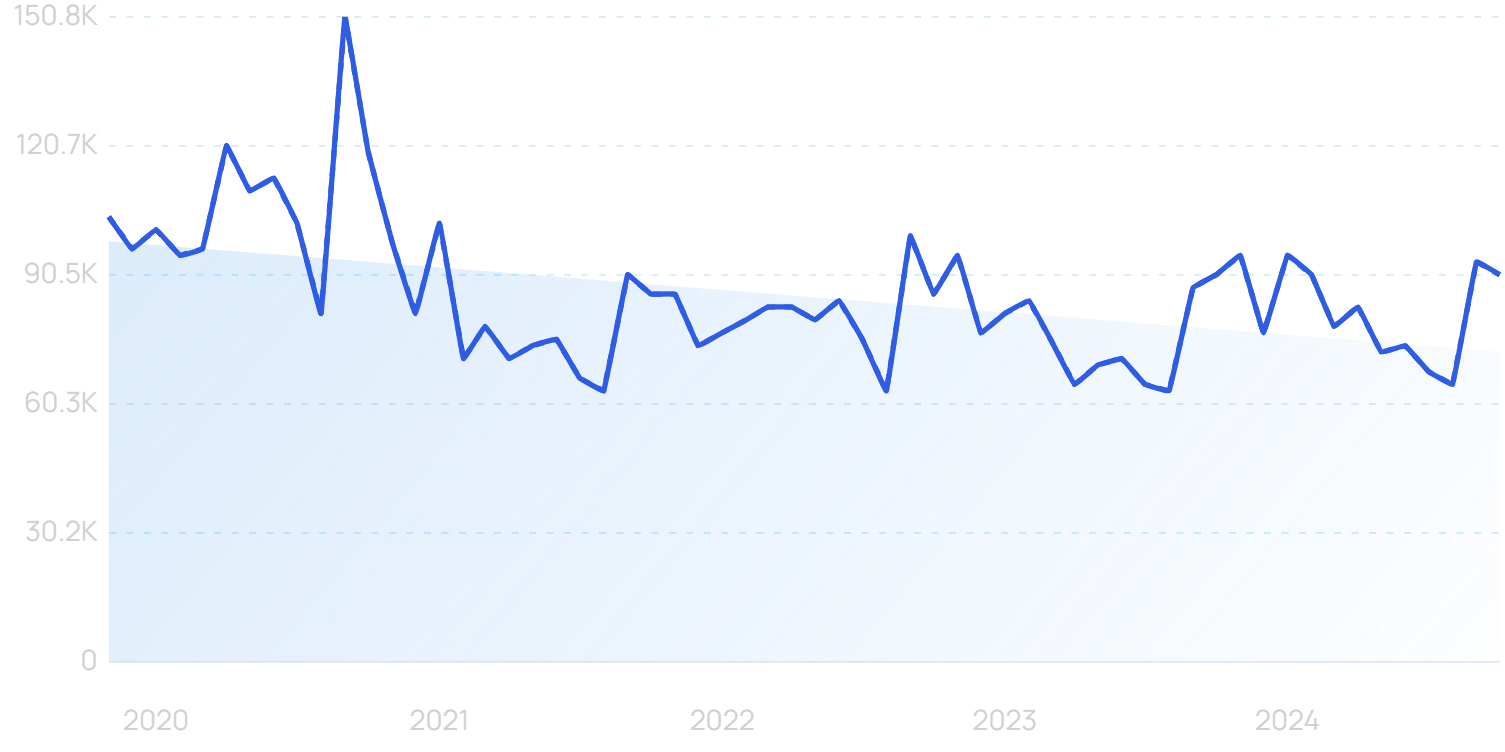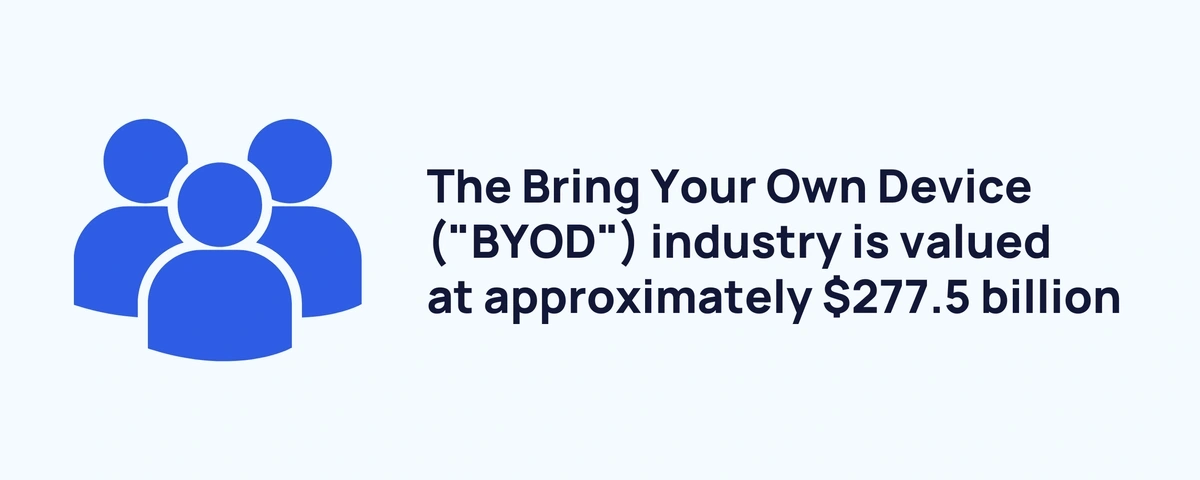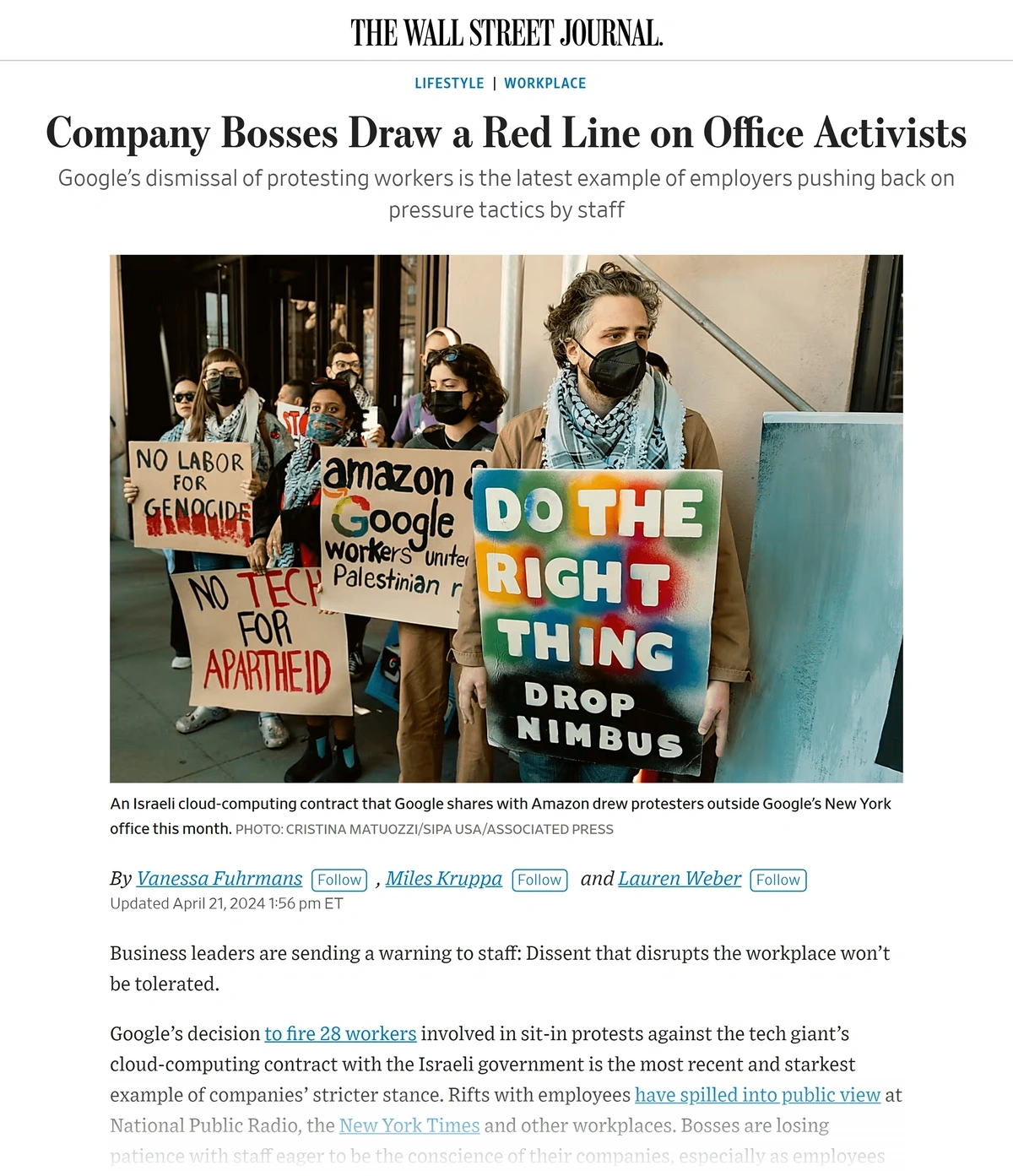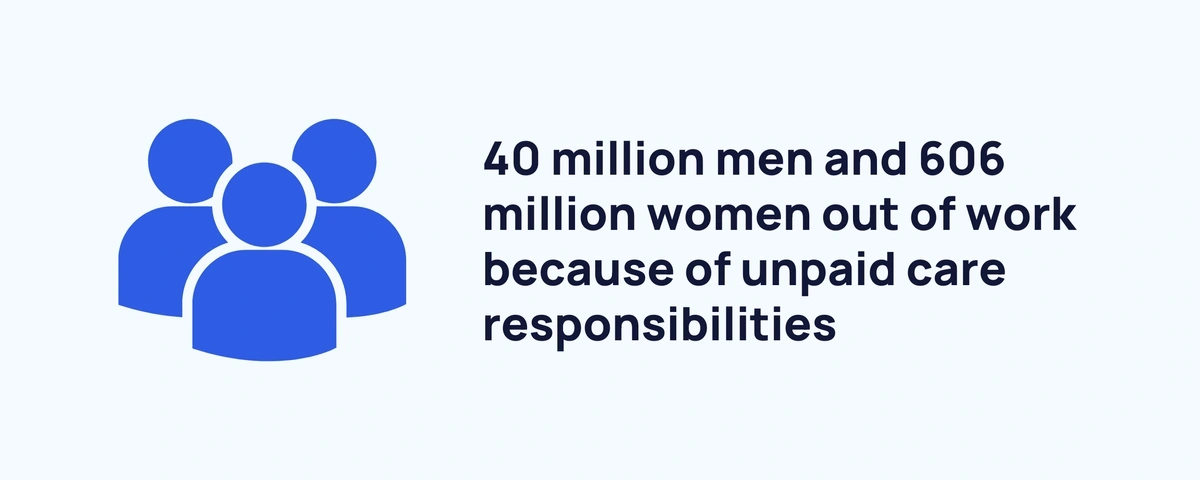
Seven Trends for the Future of Work (2024-2027)
You may also like:
Over the past five years, the American workplace has shifted dramatically.
The pandemic accelerated what was already an existing trend toward remote work, decreasing employee loyalty, and an increasing focus on employee wellness.
This — combined with a pressing shortage of workers in some industries — has left employers scrambling while putting employees in a position of negotiating power for the first time in decades.
Meanwhile, there’s a pressing question over how AI will impact these dynamics.
Read on to explore the top seven trends that will define the future of work over the next few years and beyond.
1. AI Fundamentally Alters Workplace Dynamics
AI will change the workplace for better and for worse. But like it or not, it has certainly arrived.
Searches for “Generative AI” have increased by 3950% in the last 2 years.
There are understandable fears over automation leading to a loss of jobs. McKinsey calculates that existing AI technologies are already capable of performing tasks that currently take up 60-70% of employees’ time.
And AI is only getting smarter.
AI Transforms Entire Industries
Initial concerns over automation centered on “unskilled” workers, but the rapid rise of generative AI has confounded that expectation, quickly hitting creative industries.
In the US, video editors can expect to earn a median salary of around $62,000. But there are an increasing number of AI tools promising a professional-standard job.
“AI video editing” searches are up 99X+ in the last five years.
InVideo AI is just one of many tools seeing massive growth. The technology can generate scripts, create scenes and add voiceovers using only text prompts.
It already boasts 25 million customers in 190 countries.
“InVideo AI” has 99X+ search growth over the last two years.
AI coding, AI recruitment and AI tutoring offer a few more examples of industries being completely transformed — and not necessarily to the advantage of those already in the field.
But AI also has huge potential to make a positive impact.
AI Tools Help Existing Workers
For those whose jobs are not entirely replaced by AI, the new technology has the potential to make their working lives far easier.
For instance, programmers are not yet being made obsolete by AI. Instead, they are being made 30% more efficient.
And pretty much any industry can benefit from AI meeting assistants.
Searches for “AI meeting assistant” have increased 525% in the last 2 years.
These assistants are designed to assist with things like transcription, scheduling and real-time summaries. It’s forecast to be an $11 billion market by 2031.
AI is also personalizing marketing for both consumers and businesses.
For example, Semrush added AI-powered keyword difficulty scores (PKD) to help businesses understand how to increase organic search traffic.
Meanwhile, 72% of employees expect GenAI to improve the quality of their work.
AI Creates New Jobs
Much like the industrial revolution, the dawn of AI is creating jobs as well as replacing them.
Already, some jobs that simply wouldn’t have existed before AI are coming into being.
For one thing, people are needed to actually build the models. That requires prompt tuners, deep learning engineers and more.
There’s also a brand new field of AI ethics.
“AI ethics” searches are up 567% in the last 5 years.
According to Business Insider, the position of Chief Ethics Officer can often attract “mid-six” annual salary figures.
2. Companies Shorten Work Weeks Rather Than Increase Pay
One of the largest drivers behind the rapidly shifting workplace is the current knowledge worker shortage.
Job openings in the US have been steadily falling for the past couple of years. But there are still around 7.7 million open positions.
While some of these jobs are either duplicates or unlikely to ever be filled (with employers demanding top-tier talent for little pay), the fact remains there are millions of unfilled positions.
And a large part of the reason that’s happening is because employers can’t find candidates with the skill sets required to perform in today’s workplace.
Nationwide Skills Shortage
The US Chamber of Commerce tracks nationwide labor shortage trends.
Worker shortage rates by state.
Compared to 2022 and “The Great Resignation”, it’s more of a mixed picture, with some states bouncing back to relatively normal levels.
But many regions are still feeling acute worker shortages. In the latest data, five states have more than two openings for every one available worker.
North Dakota is the worst affected, with an available worker ratio of 0.42. Meanwhile, just nine states have more available workers than open positions — California has the biggest surplus by far, with a ratio of 1.64.
Certain industries are seeing shortages more or less nationwide.
In the US construction industry, 80% of employers report having a hard time filling some or all positions. 70% are concerned about an insufficient supply of workers.
Financial, professional and business services are also facing shortages.
Because of this, employers are facing fierce competition to hire top talent.
Historically, one of the best tools for attracting top-tier employees was to increase compensation for the position.
However, that’s becoming harder and harder to do.
The Problem With Increasing Pay
Both consumers and employers are facing inflation that remains above the federal 2% target. Rates are coming down, but prices are 21.2% higher than pre-pandemic levels.
Naturally, that means workers are more eager than ever for increased pay. But companies’ expenses — from machinery to supplies — have become more costly too.
Almost one in four small businesses consider inflation to be their single biggest challenge.
With companies already having increased employee wages dramatically over the past few years, many companies are reaching the upper limit of how far they can increase their labor expense (which is typically the largest expense in a business).
Sure enough, since a surge in pay rates when the economy reopened following the pandemic, the rate of pay increases has been steadily falling. YoY salary growth is currently 4.39%.
Shorter Hours Instead Of Higher Pay
With labor budgets already being strained, a growing number of employers are looking to alternative strategies for attracting high-quality employees. In particular, an increasing number are offering shorter work weeks instead of higher pay.
Searches for “4 day week” are up 127% over 5 years.
This doesn’t necessarily even mean employers having to hire workers on a part-time basis. Offering a compressed hours arrangement — for example, four 10-hour work days instead of five 8-hour shifts — goes down as a perk that can attract new hires.
And with 75% of employees in favor of a shorter work week by way of compressed hours, combining attractive pay with a four-day schedule could be a highly desirable proposition for many employees.
Build a winning strategy
Get a complete view of your competitors to anticipate trends and lead your market
3. Employee Turnover Continues To Increase
In addition to rising costs and a shortage of employees, companies are also having to deal with increasing employee turnover.
3.3 million US workers quit in July 2024 alone.
According to TeamBuilding, the top 14 reasons for employee turnover are:
- Lack of growth and progression
- No innovation
- Inefficient management
- Inadequate compensation
- Absence of camaraderie
- Diversity deficiencies
- Life events
- Organizational restructuring
- Transfers and promotions
- Inflexible work environment
- Poor workplace culture
- Overwork
- Lack of recognition and appreciation
- Retirement
While the reasons for voluntarily leaving a position are vast, the combination of turnover plus rising wages and inflation puts employers in a very difficult position.
At the core of the problem, however, is employees’ dissatisfaction combined with their newfound position of negotiating power.
Wellness Trend Affects The Workplace
From healthy eating to meditation, the wellness movement has gained serious momentum this millennium.
“Wellness” searches are up 51% in the last 5 years.
According to the Global Wellness Institute, global per capita spending on wellness is now on par with out-of-pocket spending on healthcare. In the US, wellness is a $1.8 trillion industry.
In looking at the top reasons behind employee turnover, it's easy to see how a growing trend toward wellness has led many employees to feel dissatisfied with their careers.
From an “absence of camaraderie” to “poor workplace culture”, many of the top reasons for leaving a position relate to mental health.
4. Companies Increasingly Emphasize Wellness Benefits
With employee dissatisfaction on the rise — and a labor shortage driving wages higher — it should come as no surprise that employers are providing increasing levels of wellness benefits.
In addition to higher compensation and shorter work weeks, wellness benefits are an attractive perk in an increasingly expensive economy.
Searches for “wellness benefits” are up 110% in the last 5 years.
As most Americans know, mental health treatments like psychotherapy are not typically covered by health insurance plans (employer or otherwise).
With the average cost of therapy ranging from $100 to $200 per session, many employees simply can’t afford an extra $400 to $800 per month expense.
As proof of the importance of this, 91% of employers anticipate greater investment in mental health solutions this year.
Employers are increasing mental health spending.
And employees are responding. 89% of US workers are at least slightly interested in their employer providing mental health benefits or resources. Almost half are “very” or “extremely” interested.
That comes amid research that 75% of workers have experienced at least one mental health challenge over the past year.
And the wellness movement covers much more than just mental health.
Happier Employees Cost Less
As the wellness movement advances, both professionals and consumers have noticed the correlation between physical health, mental health, and overall wellbeing.
And while the rapid rise in wellness programs may be a new phenomenon, the benefits of improving employees’ physical health have been demonstrated for decades.
In fact, in 2010, one study showed companies saved anywhere between $2.71 to $6 in healthcare costs for every $1 invested into wellness programs.
And according to a 2021 piece from AIHR, companies with an effective wellness program realize an average reduction of 28% in sick days and 26% in healthcare costs.
More recently, Perci Health reported that wellness perks can improve workplace engagement, in turn leading to increases in profitability of up to 21%.
While it may sound obvious today, the fact is healthier employees have lower healthcare costs.
Bottom line savings, however, are not the only benefits of wellness programs.
Wellness Programs Increase Productivity
According to a study from the University of Warwick, happier employees are around 12% more productive.
With workers increasingly emphasizing wellness, and corporations seeing both tangible and intangible benefits from offering such programs, this is a trend we expect to continue growing over the coming decade.
5. Remote Work Stays, But Gets Monitored More Closely
While there’s no denying Covid-19 accelerated the work-from-home phenomenon, this is one trend that was well in place even before the pandemic.
According to the Census Bureau, employees who worked at least one day from home increased by 35% between 2000 and 2010. In fact, even in 2016, 46% of Americans reported working from home “occasionally”.
For most employees, this trend has been a net positive. While return-to-office mandates have been increasing post-pandemic, 10% more remote jobs are being listed year-over-year, as demand for flexible arrangements remains high.
And in the latest Bureau of Labor Statistics data, the percentage of employees regularly working from home (35%) has stabilized for the first time since the pandemic.
Remote Work And Productivity
With that said, the increasing trend toward remote work has created anxiety for employers and managers in particular.
In a society where most of us grew up working on location, many employers are suspicious of their employees’ ability to remain productive while working from home.
On the surface, the data shows many of these suspicions about poor WFH productivity have no basis in reality.
Despite the evidence, however, some employers don’t want to take any chances.
Searches for “remote work monitoring” are up 6500% over the last 5 years.
Increased Employee Monitoring
In the cutthroat world of investment banking, employee monitoring is nothing new.
As far back as 2017, high-profile investment firms like Barclays have been outed as using sensors to track when bankers are seated at their desks.
To some, this may sound like overkill. However, as remote work becomes more commonplace, employees working from home should expect to be monitored in an increasing number of ways.
Remote Monitoring Technology
There are a variety of tools, programs, and software employers can use to monitor their staff. Examples include:
- Keystroke trackers
- Monitoring work computer/work phone usage
- Monitoring employee location/movement
- Analyzing employee emails or internal communications
- Tracking desk presence through automated computer camera capture software
Admittedly, many employees see these tactics as both overreaching and an invasion of their privacy. Fortunately for employers, however, the law tends to side in their favor.
Legalities Of Employee Monitoring
At the core of the legal foundation surrounding employee monitoring is the Electronic Communications Privacy Act of 1986.
While the bill itself contains a variety of legalese, the short version is that workers should not expect any reasonable degree of privacy when on company property or using company equipment.
Common examples include monitoring anything that happens at the office (minus bathrooms or lockers), monitoring drivers’ locations using GPS, and the ability to monitor most if not all company emails.
With that said, given the laws were written prior to the mass adoption of in-home computers (and in particular laptops), the legalities of certain monitoring behaviors in the modern era can be tricky.
Employee Monitoring In The BYOD Era
One trend that emerged over the past decade is referred to as BYOD — Bring Your Own Device.
“BYOD” searches over the past 5 years.
Whether because of personal preferences or as a corporate cost-cutting measure, an increasing number of workers are choosing to — or being forced to — work from their own computers.
In fact, the phenomenon has become so mainstream the BYOD industry is valued at approximately $277.5 billion.
Employees can save an average of $350 per employee per year through the implementation of BYOD policies.
Given the ECPA only covers monitoring employees who are using company property, employees who work from their own devices (laptops, phones, etc.) may be protected from company monitoring policies.
The Importance Of State Laws
Along the same lines, the ECPA was written well before tens of millions of Americans were forced to work from the privacy of their own homes. Because of that, aggressive monitoring practices that would be legal in the office may tread a gray area (or be flat-out illegal) when used in an employee’s home.
In many cases, the legalities of such practices boil down to the laws of the state where the business is incorporated/headquartered.
As an example, California’s laws lean heavily in favor of protecting employees’ privacy rights.
6. Brand Stance Becomes An Employee Attraction And Retention Tool
In a society that’s becoming increasingly polarized, some companies are turning to more ideological strategies to attract high-quality employees.
While this may come across as controversial to some (and understandably so), companies with strong brand identities may be willing to shoulder that weight in return for what can be a dramatic increase in employee loyalty.
On the one hand, some CEOs — like Google’s Sundar Pichai — have made it clear the purpose of a business is to drive shareholder value. He noted that “this is a business” following employee protests over the Israeli-Palestinian conflict.
Google has clamped down on politics in the workplace.
On the flip side, studies have found that firms with greater corporate responsibility performance can reduce average turnover by as much as 50%.
With employee turnover at all-time highs, taking a strong brand stance can be a powerful way to attract and retain employees who share their employer's values.
This is especially true among younger workers, who are increasingly concerned with social issues relative to prior generations. 30% of Generation Alpha want to grow up to make a difference, the leading career aspiration among this age group.
Sustainability And Brand Stance
What’s interesting here is how companies do not need to take a stance on thorny social issues (e.g. abortion) to attract high-quality employees.
Instead, many younger workers have shown to be more committed to employers who take a strong stance on environmental sustainability.
Searches for “sustainability score” are up 159% in the last 5 years.
According to PwC, almost 1 in 5 workers value ESG policy as much as or even more than salary. A further 38% value salary the most, but weigh ESG policy highly.
And in the UK, 61% of workers aged 18-34 want to see their employers invest more in sustainability.
42% say that poor sustainability initiatives have a detrimental impact on their morale — ultimately running the risk of higher turnover.
As companies' ability to increase wages reaches a cap, and the lower bounds of a reduced work week get tested, it is likely that brand stance will become an increasingly common strategy for attracting and retaining employees.
7. Employers Tackle Gender Inequality
606 million women of working age are not in the workforce because of “unpaid care responsibilities”. That’s compared to just 40 million men.
And for every dollar earned by men in the US, women earn 84 cents.
Looking at the “controlled pay gap”, women earn almost the same as men in equivalent industries and roles and with similar experience levels. But with societal childcare expectations, it is difficult for women to move up the career ladder in the same way.
This doesn’t benefit women or workplaces. A European Investment Bank study found that fully closing the gender gap in labor markets could improve GDP in developing countries by an average of 23%.
Employers are starting to offer benefits and adjustments that reflect the realities for women in the workplace.
“Dependent Care FSAs” allow employees to save pre-tax dollars toward childcare costs.
During the last open season, “Dependent Care FSA” searches hit a five-year high.
Enrolled employees can save as much as 30% on dependent care services. They can also reduce their overall tax burden.
Some employers are starting to go over and above this nationwide scheme, offering better benefits. 56% of businesses say they are prioritizing childcare benefits to recruit and retain staff.
And on a more basic level, there is a growing movement for providing free sanitary products in workplace bathrooms.
Some estimates peg the cost to employers at as little as $5.75 per employee per year.
Conclusion
While COVID-19 accelerated many of the workplace trends explained above, their foundations were in place well before the pandemic.
From the increasing trend toward wellness, to society’s growing preference for all things digital, the combination of culture and technology lie at the heart of how the modern workplace is shifting.
Combined with the current state of the economy and the rapid development of AI, we expect many of these trends to continue into the late 2020s and beyond.
Stop Guessing, Start Growing 🚀
Use real-time topic data to create content that resonates and brings results.
Exploding Topics is owned by Semrush. Our mission is to provide accurate data and expert insights on emerging trends. Unless otherwise noted, this page’s content was written by either an employee or a paid contractor of Semrush Inc.
Share
Newsletter Signup
By clicking “Subscribe” you agree to Semrush Privacy Policy and consent to Semrush using your contact data for newsletter purposes
Written By


James is a Journalist at Exploding Topics. After graduating from the University of Oxford with a degree in Law, he completed a... Read more






